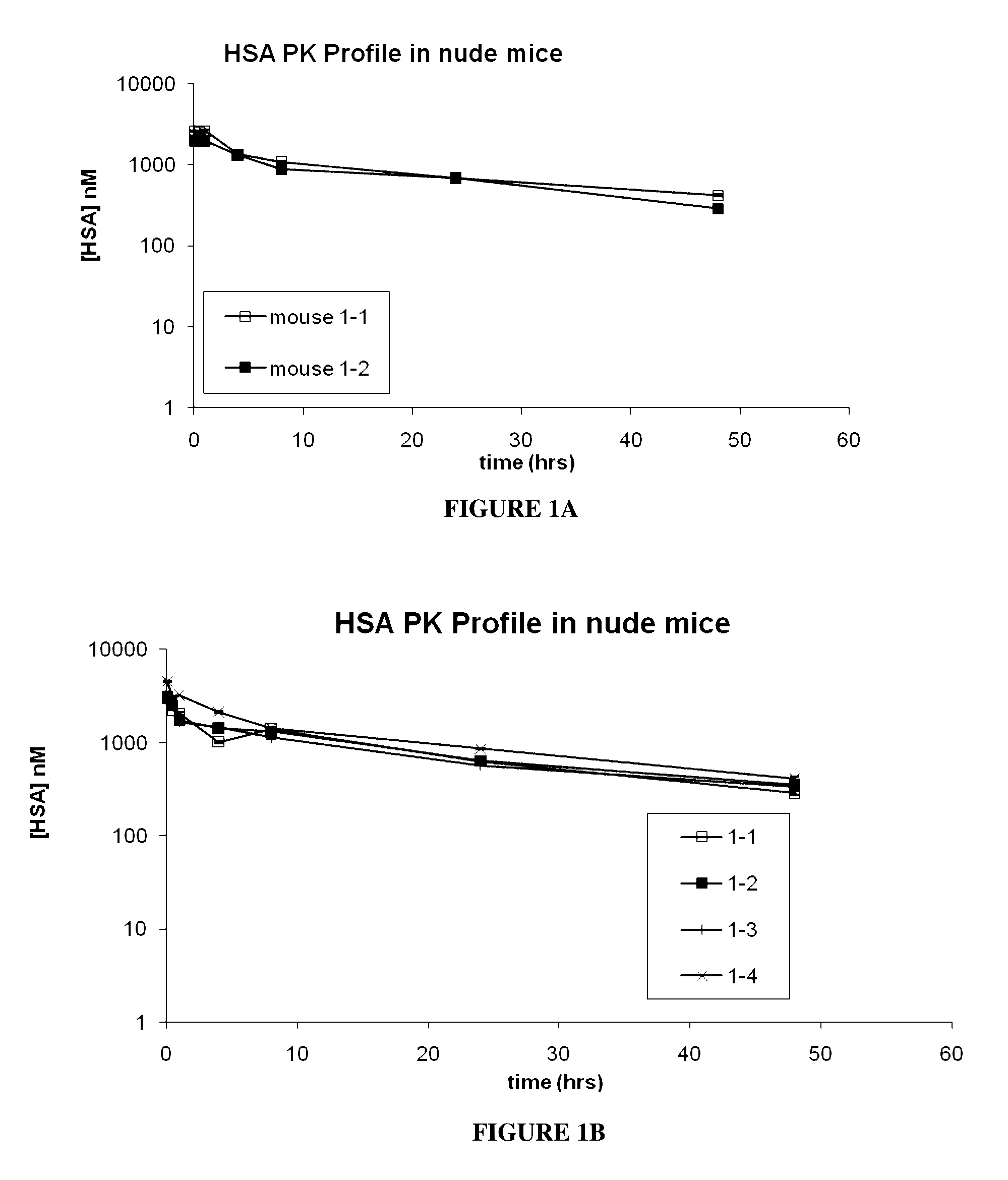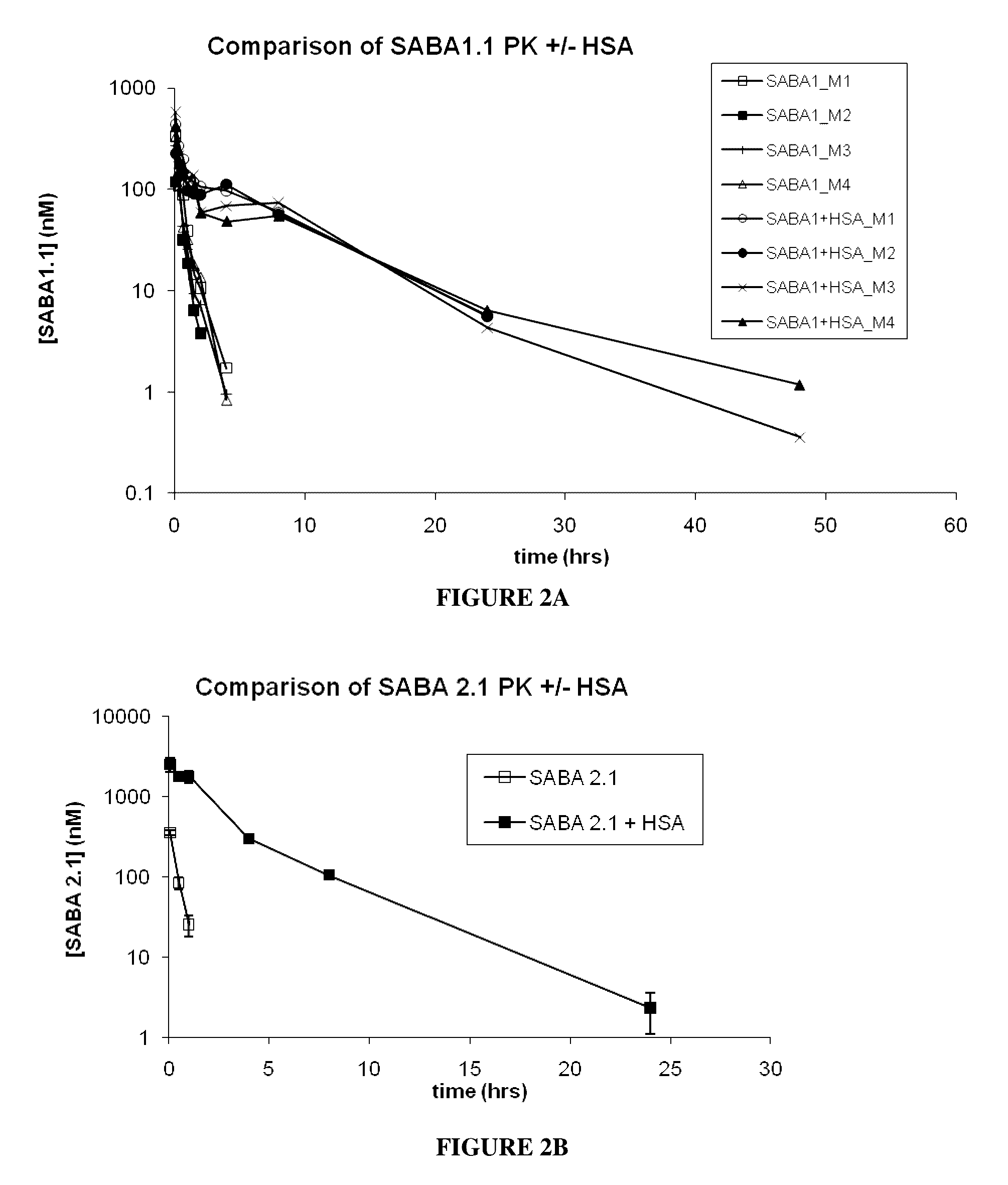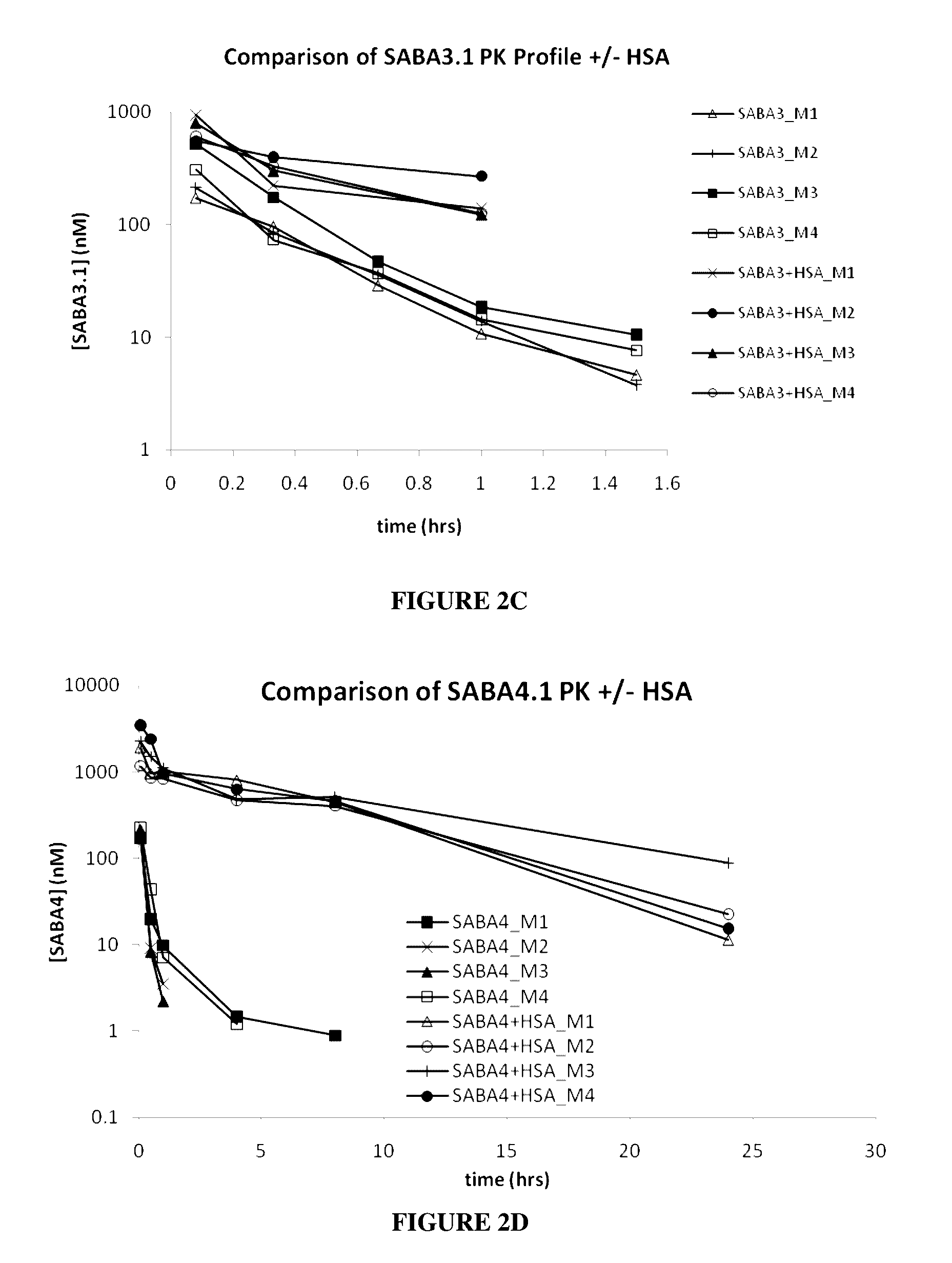Serum albumin binding molecules
a technology of serum albumin and binding molecules, which is applied in the direction of peptide/protein ingredients, peptide sources, metabolic disorders, etc., can solve the problems of increasing affecting the effect of peptides, and peptides, and reducing so as to improve the solubility and reduce the aggregation of polypeptides
- Summary
- Abstract
- Description
- Claims
- Application Information
AI Technical Summary
Benefits of technology
Problems solved by technology
Method used
Image
Examples
example a1
Screening and Selection of Candidate Serum Albumin-Binding Adnectin™
Overview
[0261]A selection technique known as PROfusion (see e.g., Roberts and Szostak, Proc Natl Acad Sci USA. 94(23):12297-302, 1997 and WO 2008 / 066752) was applied to a DNA library with variable regions designed into the BC, DE and FG loops of 10Fn3. A random library of greater than 1013 molecules was created from this design, and selection pressure was applied against a biotinylated form of HSA to isolate candidate serum albumin-binding Adnectin™ (SABA) with desirable binding properties.
High Throughput Protein Production (HTTP) Process
[0262]The various HSA binding Adnectins™ were purified using a high throughput protein production process (HTPP). Selected binders were cloned into pET9d vector containing a HIS6 tag and transformed into E. coli BL21(DE3)pLysS cells. Transformed cells were inoculated in 5 ml LB medium containing 50 μg / mL Kanamycin in a 24-well format and grown at 37° C. overnight. Fresh 5 ml LB medi...
example a2
Production and Formulation of Candidate SABAs
Midscale Protein Production of SABAs
[0268]The selected SABAs described in Example A1, followed by the His6 tag, were cloned into a pET 9d vector and expressed in E. coli BL21(DE3)pLysS cells (see Table 2 for each His-tagged SABA sequence designated SABA1.1, SABA2.1, SABA3.1, and SABA5.1). 20 ml of an inoculum culture (generated from a single plated colony) was used to inoculate 1 liter of LB medium containing 50 μg / mL Kanamycin. The culture was grown at 37° C. until A600 0.6-1.0. After induction with 1 mM isopropyl-β-thiogalactoside (IPTG) the culture was grown for another 4 hours at 30° C. and harvested by centrifugation for 30 minutes at ≧10,000×g at 4° C. Cell Pellets were frozen at −80° C. The cell pellet was resuspended in 25 mL of lysis buffer (20 mM NaH2PO4, 0.5 M NaCl, 1x Complete™ Protease Inhibitor Cocktail-EDTA free (Roche), pH 7.4) using an Ultra-turrax homgenizer (IKA works) on ice. Cell lysis was achieved by high pressure ho...
example a3
Biophysical Characterization of Candidate SABAs
Size Exclusion Chromotography
[0271]Standard size exclusion chromatography (SEC) was performed on the candidate SABAs resulting from the midscale process. SEC of midscaled material was performed using a Superdex 200 10 / 30 or on a Superdex 75 10 / 30 column (GE Healthcare) on an Agilent 1100 or 1200 HPLC system with UV detection at A214 nm and A280 nm and with fluorescence detection (excitation=280 nm, emission=350 nm). A buffer of 100 mM sodium sulfate, 100 mM sodium phosphate, 150 mM sodium chloride, pH 6.8 at appropriate flow rate of the SEC column employed. Gel filtration standards (Bio-Rad Laboratories, Hercules, Calif.) were used for molecular weight calibration.
[0272]The results of the SEC on the midscaled purified SABAs showed predominantly monomeric Adnectin™ and elution in the approximate range of 10 kDa vs. globular Gel Filtration standards (BioRad) as showed.
[0273]Differential Scanning calorimetry (DSC) analyses o...
PUM
| Property | Measurement | Unit |
|---|---|---|
| nucleic acid | aaaaa | aaaaa |
Abstract
Description
Claims
Application Information
 Login to View More
Login to View More - R&D
- Intellectual Property
- Life Sciences
- Materials
- Tech Scout
- Unparalleled Data Quality
- Higher Quality Content
- 60% Fewer Hallucinations
Browse by: Latest US Patents, China's latest patents, Technical Efficacy Thesaurus, Application Domain, Technology Topic, Popular Technical Reports.
© 2025 PatSnap. All rights reserved.Legal|Privacy policy|Modern Slavery Act Transparency Statement|Sitemap|About US| Contact US: help@patsnap.com



